
String Art Generator
String Art Generator by Yiran is a grasshopper plugin which generates a string art sequence based on an input image. You can
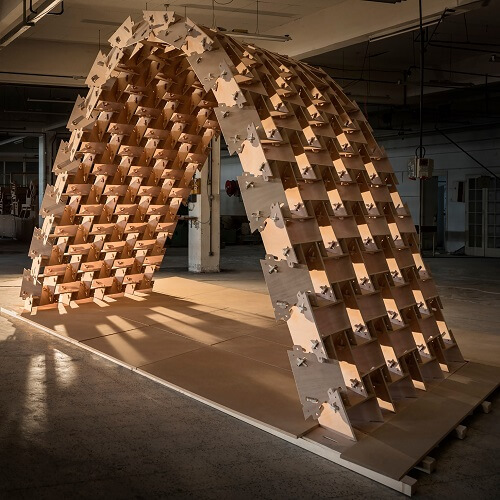
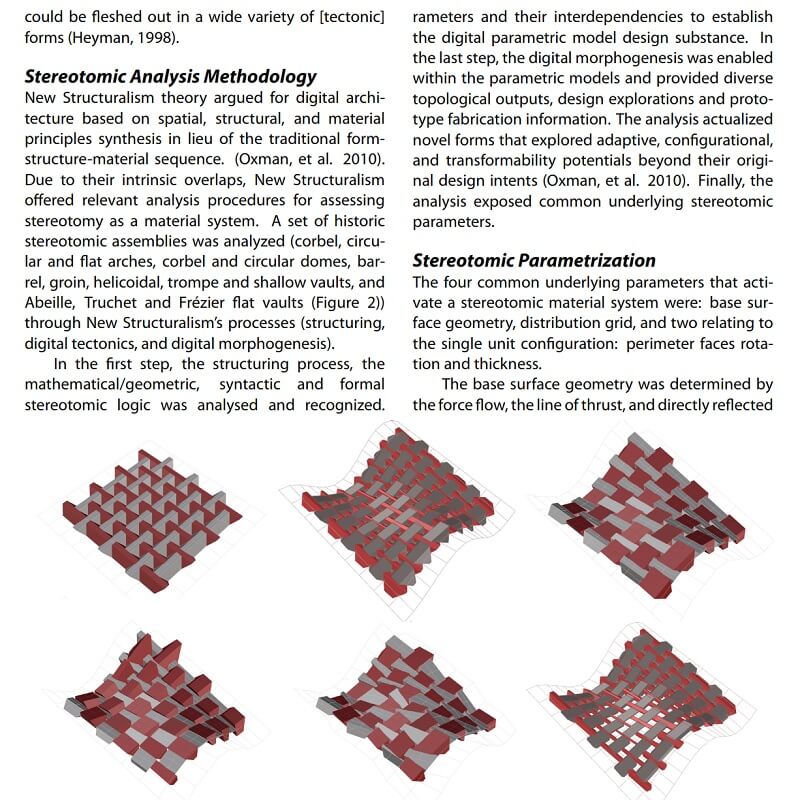
Stereotomy originated as a technique that accumulated theoretical and practical knowledge on stone material properties and construction. At its peak in the nineteenth century, by pushing the structure and construction limits, it gained the ability of using “the weight of the stone against itself by making it hover in space through the very weight that should make it fall down” (Perrault 1964, cited Etelin, 2012).
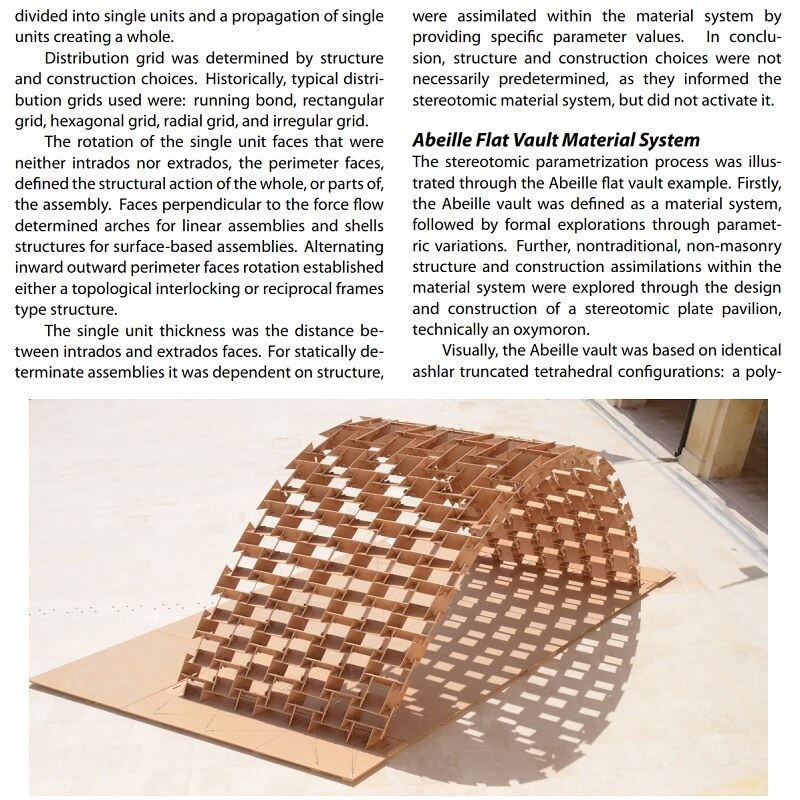 The modern architectural tectonics, based on structural comprehension in architecture, found no value in stereotomy beyond its early, Gothic period. Similarly, digital architectural theory recognized in Gothic the early examples of a material systems.
The modern architectural tectonics, based on structural comprehension in architecture, found no value in stereotomy beyond its early, Gothic period. Similarly, digital architectural theory recognized in Gothic the early examples of a material systems.
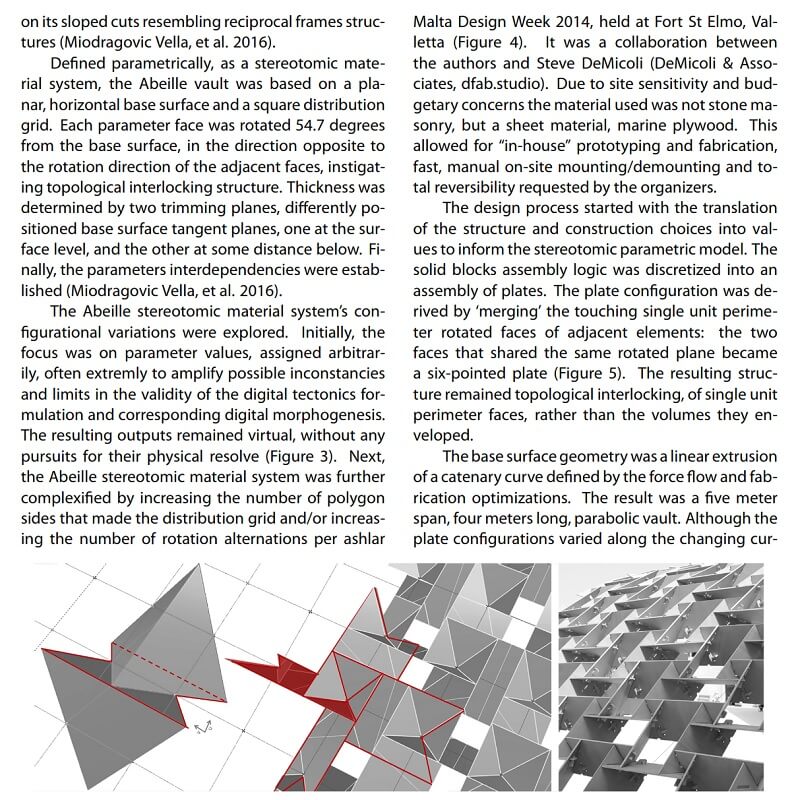 This paper by Irina Miodragovic Vella and Toni Kotnik reassesses stereotomy at its fundamental levels, as a material system based on generative processes that assimilate structure and construction through parameterization. In this way, a theoretical framework is established that exposes stereotomy’s intrinsic potentials: the continuity of historic and contemporary examples, overlaps between current research endeavours, and its genuine relevance for contemporary digital architecture.
This paper by Irina Miodragovic Vella and Toni Kotnik reassesses stereotomy at its fundamental levels, as a material system based on generative processes that assimilate structure and construction through parameterization. In this way, a theoretical framework is established that exposes stereotomy’s intrinsic potentials: the continuity of historic and contemporary examples, overlaps between current research endeavours, and its genuine relevance for contemporary digital architecture.
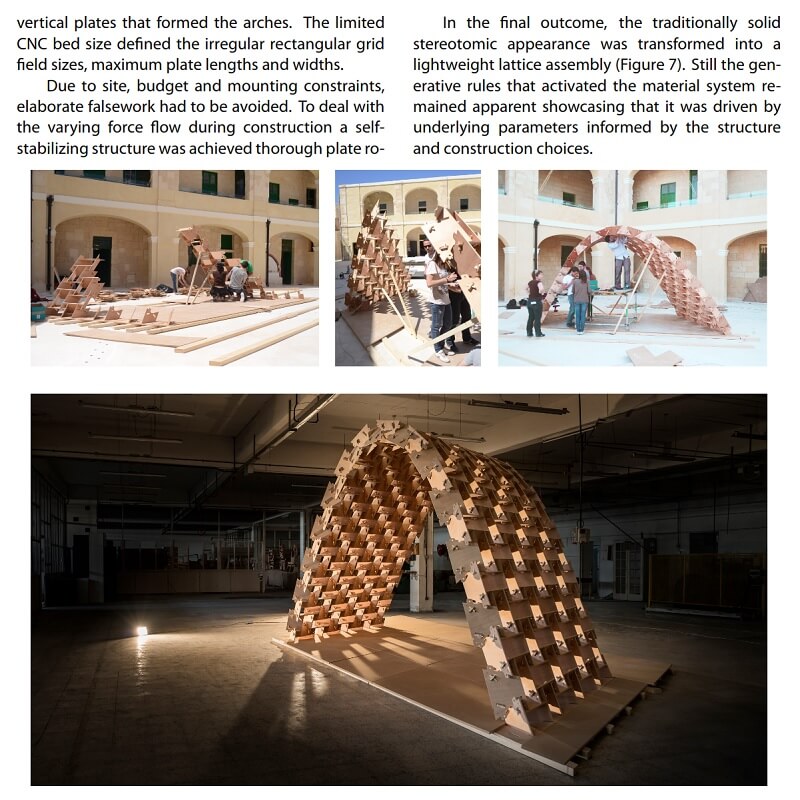

String Art Generator by Yiran is a grasshopper plugin which generates a string art sequence based on an input image. You can

This paper by Alessandro Liuti, Sofia Colabella, and Alberto Pugnale, presents the construction of Airshell, a small timber gridshell prototype erected by employing a pneumatic formwork.

In this paper by Gregory Charles Quinn, Chris J K Williams, and Christoph Gengnagel, a detailed comparison is carried out between established as well as novel erection methods for strained grid shells by means of FE simulations and a 3D-scanned scaled physical model in order to evaluate key performance criteria such as bending stresses during erection and the distance between shell nodes and their spatial target geometry.

In this paper by Frederic Tayeb, Olivier Baverel, Jean-François Caron, Lionel du Peloux, ductility aspects of a light-weight composite gridshell are developed.
Parametric Ideas for Architects @2025